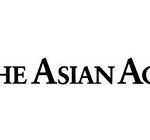As a boy I was convinced India was Asia. My conceit fitted in with the story I heard later of Indira Gandhi’s favourite Peter Sellers line being from the comedy, The Party, where an Indian who is asked “Who do you think you are?” retorts, “In India we don’t think who we are, we know who we are!” Struck by this consciousness of our exalted status when he was US ambassador to India, John Gunther Dean reported that Indians were too wrapped up in themselves to heed foreigners. The global role Lee Kuan Yew urged was unnecessary because in our own estimation India always was a world power. Then, my first visit to Singapore left me with the fear that I would have to write in vertical ideograms, put my surname first and use only chopsticks to be considered Asian. Tokyo confounded confusion. A senior diplomat there explained that Japan vetoed India’s APEC (Asia-Pacific Economic Cooperation forum) application because a country wasn’t truly Asian unless Japan had occupied it during World War II and included it in the Greater East Asia Co-Prosperity Sphere.
Pondering on these conflicting concepts, I couldn’t help wondering whether Asia exists at all. European scholars doubted it at one time, and some may still do, instinctively thinking of this continent in terms of the relevance of its separate regions to Europeans and Americans. West Asia — the Middle East to them — evokes the challenge to Israel. Central Asia can supply the world’s fuel needs. East Asia or the Far East is identified with China’s rise; South Asia with India’s.


